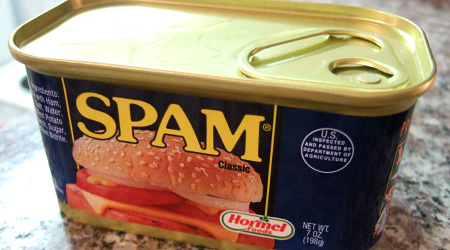Small Business E-Mail Marketing Mistakes

E-mail, like any other form of business communication, can be used for either good or evil. Unfortunately, e-mail was initially used for selling pharmaceuticals and counterfeit products and turned what could have been an effective business tool for customers into an Internet scourge. It can still be an effective means of conveying information when used properly but there are certain legal and design requirements to consider if e-mail is going to benefit your customers and your small business.
Not Following the Law
Unsolicited, and possibly illegal, e-mail communications became so prevalent at one point that a federal law was passed called the CAN-SPAM Act to deal with it. As a result, there are certain legal requirements for acquiring and administering e-mail lists for marketing purposes. A key aspect is a customers ability to "opt in" and then unsubscribe from e-mail communications. E-mail recipients must have voluntarily chosen to receive e-mails from your business. And if at some point in the future they change their mind, there must be an easy way to unsubscribe from any additional communications. Failure to properly follow these legal requirements can result in lawsuits and severe penalties.
Advertising Instead of Informing
There is a fine line between advertising and informing. The most successful small business e-mail marketing and adverting campaigns are viewed by their recipients as an invaluable resource. These e-mails work best if they provide timely information about a product or service. Customers should look forward to receiving your small business e-mail as it minimizes the need for them to constantly monitor your business website for updates. It's not that you can't advertise in an e-mail but as with most business endeavors, some ways are more successful than others.
E-Mail Sensory Overload
E-mails has evolved significantly from the days of black text on a white background providing the most bare-bones of formatting. Many e-mail clients, either standalone or in a web browser, are able to process e-mails with HTML which look and work exactly like a webpage. This means however, restraint must be used to prevent HTML e-mail design errors which are common to the Internet at large. Including graphics which are too big in size or using too many visual elements can make it difficult to navigate an e-mail and convey the message to your customers. The best marketing e-mails do more with less and focus on key elements by eliminating clutter.
Non-Standard Design
Regardless of whether you use a traditional e-mail or one which incorporates HTML there are standard designs customers come to expect. Don't create a small business marketing e-mail which is too long. Even though it may look and feel like a webpage, it's not and cannot be treated the same. Also refrain from using nonstandard fonts which may not render correctly in the recipient's mail client. If you're going to create an HTML-based e-mail marketing campaign, be sure to test it across multiple browsers, operating systems and standalone clients to verify it displays as expected.
Abusing the Relationship
Above all else, never abuse the established relationship you have with your customers. All e-mails for your marketing campaign have been voluntarily signed up for by visitors to your website or existing customers. They are therefore interested in hearing what you have to say. They can just as easily however unsubscribe so it is important to maintain a respectful relationship. Provide an e-mail which contains value and is both sincere and honest in its communication. If you do this, your small business should have no problem growing with the support of helpful and satisfied customers.







